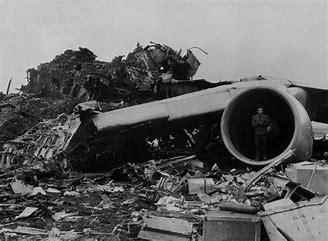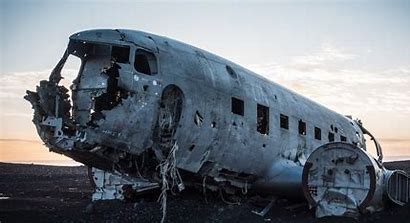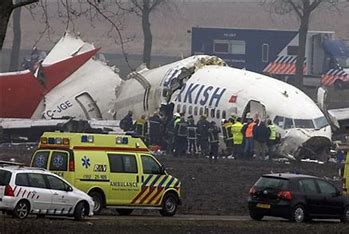“Unforgettable Tragedies: Remembering the Darkest Days in Aviation History”
Air travel, despite its safety protocols and advancements, has witnessed some of the most devastating tragedies in history. These incidents serve as grim reminders of the fragility of human life and the importance of continual improvement in aviation safety. Among these tragic events, the Tenerife Airport Disaster, Japan Airlines Flight 123, the collision over Charkhi Dadri, and Turkish Airlines Flight 981 stand out as some of the DEADLIEST AIRPLANE CRASHES, forever etched in the annals of aviation history.
Tenerife Airport Disaster:

On March 27, 1977, the Tenerife Airport Disaster unfolded in the Canary Islands, marking the deadliest aviation accident to date. Amidst heavy fog at Los Rodeos Airport (now Tenerife North Airport), miscommunication and a series of unfortunate events led to the collision of two Boeing 747s belonging to Pan Am and KLM Royal Dutch Airlines. The catastrophic collision claimed the lives of 583 passengers and crew, leaving the world in shock and mourning.
Japan Airlines Flight 123:

August 12, 1985, witnessed another tragic chapter in aviation history with the crash of Japan Airlines Flight 123. The Boeing 747, en route from Tokyo to Osaka, experienced a catastrophic failure when its vertical stabilizer severed, causing the aircraft to lose control and crash into a mountain near Gunma Prefecture. Despite valiant rescue efforts, only four of the 524 passengers and crew survived, making it the deadliest single-aircraft accident in history.
Collision over Charkhi Dadri:

The collision over Charkhi Dadri, India, on November 12, 1996, remains one of the most devastating mid-air collisions in aviation history. A Saudi Arabian Airlines Boeing 747, bound for Dhahran, collided with a Kazakhstan Airlines Ilyushin Il-76 cargo plane. Tragically, all 349 passengers and crew aboard both aircraft perished in the catastrophic accident, highlighting the importance of air traffic control systems and international cooperation in preventing such disasters.
Turkish Airlines Flight 981:

The haunting memory of Turkish Airlines Flight 981 still lingers, following its tragic crash on March 3, 1974. The McDonnell Douglas DC-10, en route from Istanbul to London, experienced a catastrophic failure when its cargo door blew off mid-flight, causing rapid decompression and structural damage. Despite the crew’s efforts to regain control, the aircraft plummeted to the ground in a forest near Paris, claiming the lives of all 346 passengers and crew onboard.
Lessons Learned and Legacy:
The aftermath of these catastrophic accidents prompted extensive investigations, leading to crucial safety reforms and advancements in aviation technology. Improved training protocols, enhanced communication systems, and stricter regulations regarding aircraft maintenance and design have been implemented to mitigate the risk of similar tragedies in the future. Additionally, the resilience and solidarity demonstrated by the global aviation community in the wake of such disasters serve as a testament to the human spirit’s capacity to persevere amidst adversity.
Conclusion :
As we reflect on the DEADLIEST AIRPLANE CRASHES in history, we honor the memory of the lives lost and reaffirm our commitment to ensuring the safety and security of air travel for generations to come. While these tragedies serve as somber reminders of the inherent risks associated with aviation, they also inspire ongoing efforts to learn from the past, implement necessary reforms, and strive towards a future where such devastating events are relegated to the annals of history. Through collective vigilance, innovation, and unwavering dedication to safety, we honor the legacy of those who perished and endeavor to build a safer, more resilient aviation industry for all.
